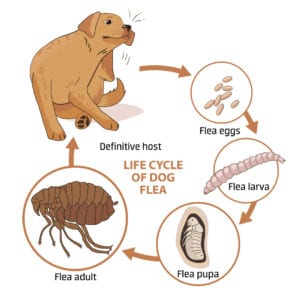“Health officials are urging people to take precautions after a second Arizona county in two weeks confirmed that fleas in the area have tested positive for plague.
The announcement by Navajo County Public Health officials on Friday comes one week after Coconino County officials found prairie dogs in the area to be carrying fleas with the plague — the infectious disease infamous for killing millions of Europeans in the Middle Ages.
People are advised to take certain measures to reduce the risk of exposure to this serious disease, which can be present in fleas, rodents, rabbits and predators that feed on these animals.
The disease can be transmitted to humans and other animals by the bite of an infected flea or by direct contact with an infected animal.”
 From the Center for Disease Control:
From the Center for Disease Control:
- All ill animals, especially cats, should be seen by a veterinarian.
- If you live in areas where plague occurs, treat pet dogs and cats for flea control regularly and do not allow these animals to roam freely.
- Make your home rodent-proof. Eliminate sources of food and nesting places for rodents around homes, work places, and recreation areas; remove brush, rock piles, junk, cluttered firewood, and potential food supplies, such as pet and wild animal food.
- Pet owners: do not pick up or touch dead animals.
What to Do When a Pet Gets Fleas
Step 1: Treat the pet’s environment. You must kill fleas and ticks where they live when they’re not on your pet. Hire a professional exterminator. Be sure to explain that you have a flea or tick problem and that you have pets.
Step 2: Kill fleas and ticks that are on your pet. When used as directed, flea and tick control products are safe and effective at preventing re-infestation of your pet. There are several excellent products available for cats and dogs. Ask your vet for a product recommendation that will be suitable for your pet.
Step 3: Prevent re-infection. Treatment with a product like Frontline Top Spot will kill and repel ticks for one month, and fleas for up to three months. Use Frontline Top Spot topical treatment on dogs as young as ten weeks of age and cats as young as twelve weeks of age. Pet beds, carpets, blankets and other items must also be sanitized to kill any eggs that may be hiding.
Step 4: Break the reproductive cycle of fleas. In the past, controlling fleas and ticks has been difficult, however, new products are available which make external parasite control manageable. Your vet can recommend a safe and effective product for your pet.
Remember – fleas and ticks are NOT just summer time problems. While it does get cool enough during the winter to decrease flea and tick activity, it does not get cold enough to kill them. Fleas and ticks can live very happily indoors during the winter months, so be aware and check your pets frequently year round.
Questions or concerns? Talk to your veterinarian.

